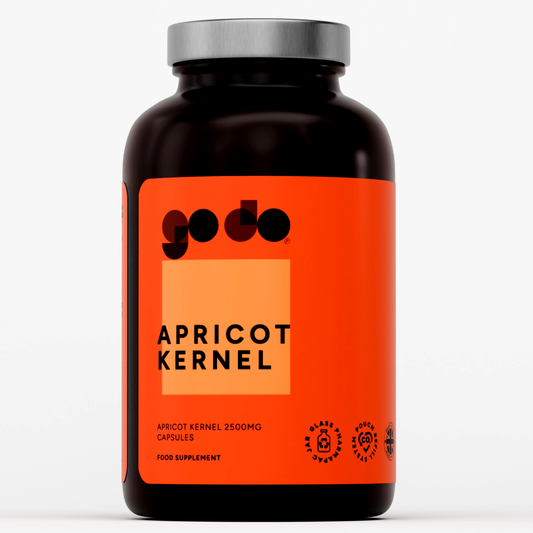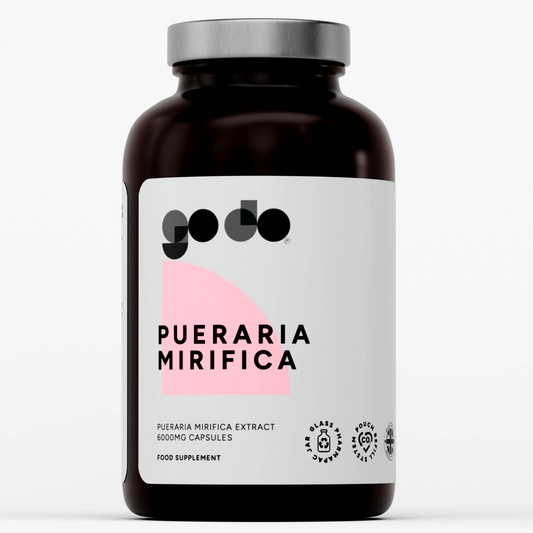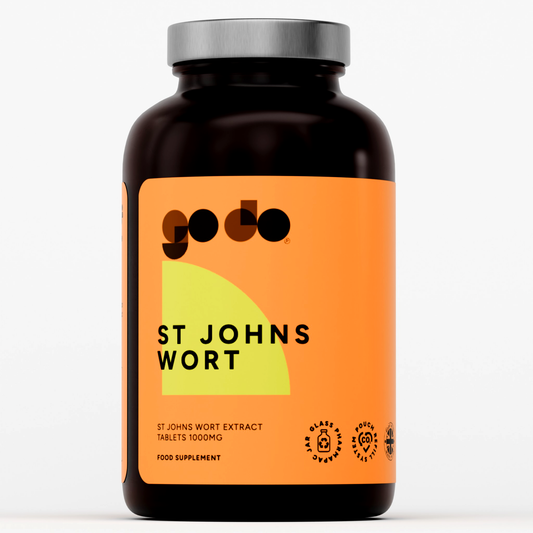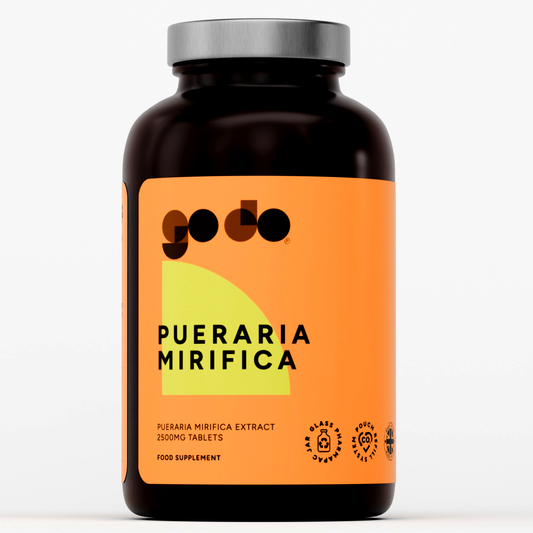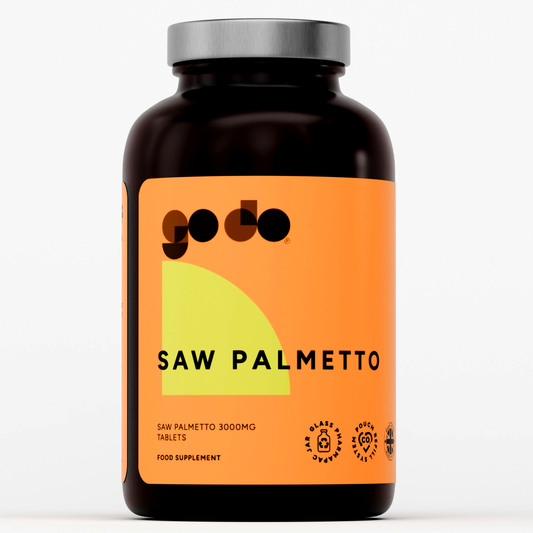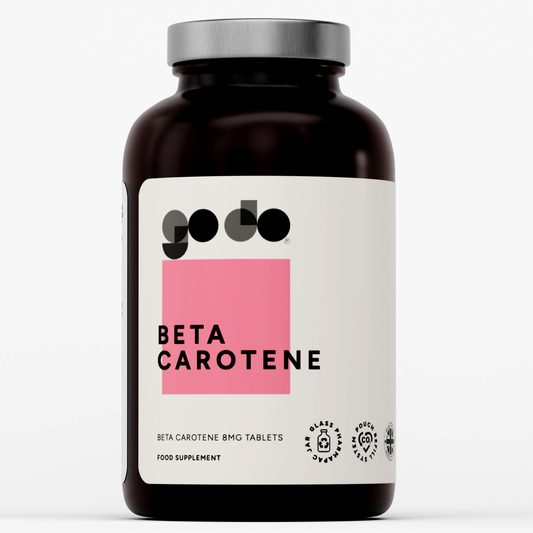Understanding Protein's Role in Muscle Development
Protein serves as the fundamental building block for muscle tissue development, providing the essential amino acids necessary for muscle protein synthesis (MPS), the biological process through which new muscle proteins are created to repair and build muscle fibers following resistance training. This process requires adequate protein availability in the bloodstream, making strategic protein supplementation a crucial component of any serious muscle-building program.
The science of muscle protein synthesis reveals that optimal muscle growth occurs when protein synthesis rates exceed protein breakdown rates, creating a net positive protein balance that allows for tissue accumulation over time. This delicate balance requires not only sufficient total protein intake but also proper timing and amino acid composition to maximize the anabolic response and support consistent muscle growth and muscle repair .
Research consistently demonstrates that individuals engaged in resistance training require significantly higher protein intakes than sedentary populations, with recommendations ranging from 1.6 to 2.2 grams per kilogram of body weight daily for optimal muscle growth. These elevated requirements reflect the increased protein turnover and repair demands created by intense training, making protein supplementation a practical necessity for many athletes and fitness enthusiasts.
The convenience and bioavailability advantages of protein powders make them particularly valuable for meeting these elevated protein requirements, offering rapid absorption and high-quality amino acid profiles that can be precisely timed around training sessions for maximum anabolic benefit. This strategic supplementation approach allows for optimization of muscle-building potential while supporting recovery and adaptation to training stress.
Understanding the relationship between protein intake and muscle growth enables informed decisions about supplementation strategies that align with individual goals, training demands, and dietary preferences. The key lies in selecting protein sources that provide optimal amino acid profiles while fitting seamlessly into comprehensive nutrition and training programs designed for sustained muscle development.
Whey Protein: The Gold Standard for Muscle Growth
Whey Protein Concentrate vs. Isolate

Whey protein concentrate represents the most economical form of whey protein supplementation, containing 70-80% protein by weight along with small amounts of lactose, fat, and bioactive compounds that contribute to its nutritional value and potential health benefits. This processing method preserves many of the naturally occurring immunoglobulins, lactoferrin, and growth factors found in whey, providing additional benefits beyond simple protein content.
The lactose content in whey protein concentrate, typically ranging from 5-10%, may cause digestive discomfort in lactose-intolerant individuals but provides a source of carbohydrates that can support post-workout glycogen replenishment. This carbohydrate content also contributes to the overall caloric density of the supplement, making it valuable for individuals seeking to increase overall caloric intake for muscle growth.
Whey protein isolate undergoes additional processing to remove most lactose, fat, and carbohydrates, resulting in a product that is 90-95% protein by weight with minimal additional components. This higher protein concentration makes isolate ideal for individuals with lactose intolerance, those following low-carbohydrate diets, or anyone seeking maximum protein content per serving without additional calories.
The faster absorption characteristics of whey protein isolate, due to its reduced fat and lactose content, may provide advantages for post-workout supplementation when rapid amino acid delivery is prioritized. However, the practical differences in absorption speed between concentrate and isolate are often minimal and may not significantly impact muscle-building outcomes for most individuals when utilizing a protein shake .
Cost considerations often favor whey protein concentrate for budget-conscious consumers, as the additional processing required to produce isolate typically results in higher prices per serving. For most individuals without lactose intolerance or specific dietary restrictions, concentrate provides excellent value while delivering the mass gain muscle-building benefits associated with high-quality whey protein supplementation.
Whey Protein Hydrolysate and Advanced Forms
Whey protein hydrolysate represents the most processed form of whey protein, utilizing enzymatic pre-digestion to break protein chains into smaller peptides and amino acids that theoretically provide faster absorption and reduced allergenic potential. This pre-digestion process creates a product that may be tolerated by individuals with milk protein sensitivities who cannot consume other forms of whey protein.
The theoretical absorption advantages of hydrolyzed whey protein may translate to faster amino acid availability in the bloodstream, potentially enhancing post-workout muscle protein synthesis initiation. However, research comparing hydrolysate to other whey forms often shows minimal practical differences in muscle-building outcomes, suggesting that the premium price may not be justified for most users.
The bitter taste characteristics of whey protein hydrolysate, resulting from the hydrolysis process, often require aggressive flavoring and sweetening that may compromise the purity of the final product. This taste challenge, combined with significantly higher costs, limits the practical appeal of hydrolyzed whey for many consumers seeking effective muscle-building supplementation.
Specialized whey protein blends combining concentrate, isolate, and hydrolysate aim to provide sustained amino acid release patterns that theoretically optimize muscle protein synthesis over extended periods. While these products offer marketing appeal, research supporting superior muscle-building outcomes compared to single-form whey proteins remains limited and may not justify the typically higher costs.
The practical recommendation for most individuals focuses on high-quality whey protein concentrate or isolate based on individual tolerance and budget considerations, as these forms provide proven muscle-building benefits at accessible price points. Advanced forms may benefit specific populations but are generally unnecessary for effective muscle growth in healthy individuals.
Casein Protein: The Slow-Release Muscle Builder
Understanding Casein's Unique Properties
Casein protein, comprising approximately 80% of milk protein, exhibits fundamentally different digestion and absorption characteristics compared to whey protein, forming gel-like structures in the stomach that slow gastric emptying and provide sustained amino acid release over 6-8 hours. This prolonged release pattern makes casein particularly valuable for maintaining positive protein balance during extended periods without food intake.
The anti-catabolic properties of casein protein stem from its ability to provide steady amino acid availability that helps prevent muscle protein breakdown during fasting states, particularly overnight when the body would otherwise catabolize muscle tissue for amino acid needs. This muscle-sparing effect complements the anabolic stimulus provided by faster-absorbing proteins like whey.
Micellar casein represents the highest quality form of casein protein, maintaining the natural protein structure found in milk through minimal processing that preserves the slow-digestion characteristics that define casein's unique benefits. This form provides superior mixability and taste compared to acid casein or caseinate forms while maintaining optimal amino acid release patterns.
The leucine content of casein protein, while lower than whey protein, still provides sufficient stimulus for muscle protein synthesis activation when consumed in appropriate amounts. The sustained leucine availability from casein may actually provide advantages over whey for maintaining elevated muscle protein synthesis rates over extended periods, particularly when used strategically around sleep periods.
Research demonstrates that combining fast-absorbing whey protein with slow-release casein protein may provide synergistic muscle-building benefits that exceed either protein alone, suggesting that strategic use of both proteins within comprehensive supplementation programs optimizes muscle growth potential throughout various periods of the day.
Strategic Timing for Casein Supplementation
Bedtime protein supplementation with casein has gained significant research support for enhancing overnight muscle protein synthesis and supporting muscle growth when consumed 30-60 minutes before sleep. This timing strategy takes advantage of casein's slow-release properties to fuel muscle recovery and growth during the extended fasting period of sleep.
Studies involving bedtime casein supplementation consistently demonstrate increased muscle protein synthesis rates throughout the night compared to placebo conditions, with some research showing enhanced muscle growth and strength gains when bedtime protein is added to comprehensive training and nutrition programs. These benefits appear particularly pronounced in younger, resistance-trained individuals.
The optimal dose for bedtime casein supplementation appears to be 30-40 grams, providing sufficient amino acids to maintain elevated muscle protein synthesis throughout the sleep period without excessive calories that could interfere with sleep quality or contribute to unwanted fat gain. This amount can be achieved through protein powder supplementation or whole food sources like Greek yogurt or cottage cheese.
Pre-workout casein supplementation may provide benefits for extended training sessions by ensuring amino acid availability throughout longer workouts, though whey protein typically remains preferred for immediate post-workout supplementation due to its faster absorption characteristics. Casein may be valuable for individuals training in fasted states who seek sustained amino acid availability during exercise.
Meal replacement applications for casein protein take advantage of its satiety-promoting properties and sustained amino acid release to support muscle maintenance during caloric restriction or as convenient nutrition sources during busy periods. The slower digestion and increased satiety compared to whey make casein valuable for weight management while preserving muscle mass.
Plant-Based Protein Options for Muscle Growth
Pea Protein and Legume-Based Options
Pea protein has emerged as one of the most effective plant-based protein sources for muscle building, providing a complete amino acid profile with particularly high concentrations of branched-chain amino acids (BCAAs) that closely match those found in whey protein. The leucine content of pea protein, approximately 8% by weight, provides sufficient stimulus for muscle protein synthesis activation when consumed in appropriate amounts.
Research comparing pea protein to whey protein for muscle growth demonstrates comparable results when total protein intake and training variables are controlled, suggesting that pea protein can effectively support muscle development in both omnivorous and vegetarian populations. These findings challenge previous assumptions about plant protein inferiority for muscle-building applications.
The digestibility of pea protein has improved significantly through modern processing techniques that remove anti-nutritional factors and improve amino acid bioavailability, resulting in products that approach whey protein in terms of absorption speed and utilization efficiency. Quality pea protein isolates typically provide 85-90% protein content with excellent solubility and taste characteristics.
Allergen considerations favor pea protein for individuals with dairy, soy, or other common protein allergies, as peas represent a hypoallergenic protein source that is well-tolerated by most individuals. This makes pea protein valuable not only for vegans and vegetarians but also for individuals with dietary restrictions that limit other protein options.
The environmental sustainability advantages of pea protein production, requiring significantly less water and generating lower carbon emissions compared to animal-based proteins, align with increasing consumer interest in environmentally conscious nutrition choices. These factors contribute to the growing popularity of pea protein among environmentally aware athletes and fitness enthusiasts.
Rice Protein and Grain-Based Alternatives

Rice protein, particularly from brown rice sources, provides a viable plant-based option for muscle building despite being incomplete in certain amino acids, particularly lysine. When combined with complementary protein sources or consumed as part of varied plant-based diets, rice protein can effectively support muscle growth and recovery in trained individuals.
The hypoallergenic nature of rice protein makes it suitable for individuals with multiple food sensitivities who cannot tolerate dairy, soy, or legume-based proteins. This broad tolerance profile makes rice protein valuable as either a primary protein source or component of protein blends designed for sensitive individuals.
Processing improvements in rice protein extraction have enhanced both the amino acid profile and taste characteristics of modern rice protein products, with some featuring amino acid fortification to address natural limitations in lysine content. These enhanced formulations provide more complete nutrition while maintaining the allergen-friendly characteristics of rice protein.
The slower digestion rate of rice protein compared to whey provides sustained amino acid release that may benefit muscle protein synthesis maintenance over extended periods, similar to casein protein but from plant sources. This characteristic makes rice protein valuable for bedtime supplementation or extended periods between meals.
Cost advantages often favor rice protein among plant-based options, as rice represents an abundant and economical protein source that can provide effective muscle-building nutrition at accessible price points. This economic accessibility makes rice protein valuable for budget-conscious individuals seeking plant-based protein supplementation.
Hemp, Soy, and Specialty Plant Proteins
Hemp protein provides a unique plant-based option that combines complete protein with beneficial omega-3 and omega-6 fatty acids, fiber, and minerals that support overall health beyond simple muscle building. The 3:1 omega-6 to omega-3 ratio in hemp protein aligns with optimal fatty acid intake recommendations while providing anti-inflammatory benefits.
The fiber content of hemp protein, typically 5-15% by weight, supports digestive health and satiety while providing sustained energy release that may benefit training performance and recovery. However, this fiber content may cause digestive discomfort in sensitive individuals when consumed in large quantities.
Soy protein remains one of the most researched plant-based proteins for muscle building, with studies consistently demonstrating effectiveness comparable to animal-based proteins when consumed in adequate amounts. The complete amino acid profile and high leucine content of soy protein provide the essential amino acids needed for optimal muscle protein synthesis stimulation.
Concerns about soy protein's phytoestrogen content and potential hormonal effects have been largely addressed by research showing no negative impacts on testosterone levels or muscle building outcomes in healthy men consuming typical supplementation amounts. These findings support soy protein as a viable option for all populations seeking plant-based muscle-building nutrition.
Specialty plant protein blends combining multiple sources (pea, rice, hemp, etc.) aim to provide complete amino acid profiles while leveraging the unique benefits of individual protein sources. These blends often provide superior amino acid completeness compared to single-source plant proteins while offering varied flavors and textures that enhance palatability.
Mass Gainers and High-Calorie Protein Formulas
Understanding Mass Gainer Composition

Mass gainers represent specialized protein supplements designed to provide substantial calories alongside high-quality protein to support muscle growth in individuals struggling to consume adequate calories through whole foods alone. These products typically contain 50-60 grams of protein per serving combined with 150-300 grams of carbohydrates and moderate amounts of fat, delivering 600-1200 calories per serving.
The carbohydrate sources in quality mass gainers emphasize complex carbohydrates such as oats, quinoa, and sweet potato rather than simple sugars, providing sustained energy release that supports training performance while minimizing fat gain risk. These complex carbohydrate sources also provide additional nutrients including B vitamins, minerals, and fiber that support overall health.
Protein quality in mass gainers varies significantly between products, with superior formulations utilizing whey protein isolate or concentrate as primary protein sources rather than lower-quality proteins or excessive amounts of amino acid spiking ingredients. The protein-to-carbohydrate ratio should align with individual goals and training demands.
Added ingredients in mass gainers often include digestive enzymes to support nutrient absorption, creatine monohydrate for strength and power benefits, and various vitamins and minerals to support overall health and recovery. These additions can provide value when they address specific nutritional needs or training requirements.
Quality considerations for mass gainers include avoiding products with excessive added sugars, artificial ingredients, or low-quality protein sources that may compromise health or training outcomes. Reading ingredient labels carefully helps identify products that align with quality nutrition standards while providing the caloric density needed for muscle growth.
Strategic Use of Mass Gainers
Mass gainers are most appropriate for individuals with high metabolic rates, demanding training schedules, or difficulty consuming adequate calories through whole foods due to appetite limitations or lifestyle constraints. These products provide a convenient solution for meeting elevated caloric requirements necessary for muscle growth in hard-gainers.
Timing mass gainer consumption around training sessions can optimize their muscle-building potential, with post-workout consumption providing immediate nutrition for recovery while pre-workout use may support training performance in individuals with high energy demands. The large serving sizes require careful timing to avoid digestive discomfort during exercise.
Gradual introduction of mass gainers helps assess individual tolerance and prevents digestive upset that can occur when suddenly increasing caloric and carbohydrate intake significantly. Starting with half servings and gradually increasing to full servings allows for adaptation while identifying optimal dosing for individual needs.
Whole food integration remains important even when using mass gainers, as these supplements should complement rather than replace balanced nutrition from varied food sources. The goal is using mass gainers to bridge caloric gaps rather than relying on them as primary nutrition sources.
Quality mass gainers can provide value for specific populations and circumstances, but they require careful selection and strategic use to avoid excessive fat gain while supporting muscle growth objectives. Understanding individual caloric needs and training demands guides appropriate mass gainer selection and implementation.
Protein Powder Selection Criteria
Evaluating Protein Quality and Purity
Protein digestibility corrected amino acid score (PDCAAS) and amino acid score (AAS) provide standardized measures for evaluating protein quality, with scores approaching 1.0 indicating complete proteins with optimal amino acid profiles for human nutrition. Whey proteins typically score highest among all protein sources, while plant proteins may score lower but can still provide effective muscle-building nutrition.
Third-party testing and certification programs help verify protein content accuracy and purity claims, as the supplement industry has faced challenges with protein spiking and contaminated products. Looking for NSF, Informed Sport, or USP certification provides confidence in product quality and safety for athletic populations.
Amino acid profiles listed on product labels reveal the completeness and muscle-building potential of protein supplements, with particular attention to leucine content (should be at least 2.5g per serving) and essential amino acid ratios that support optimal muscle protein synthesis. Complete proteins provide all essential amino acids in appropriate ratios.
Heavy metal testing results, when available, help identify products with minimal contamination from lead, mercury, cadmium, and arsenic that can accumulate in protein supplements, particularly those derived from certain geographical regions or processing methods. Reputable manufacturers provide testing results or certificates of analysis.
Artificial ingredient evaluation includes assessing sweeteners, flavors, colors, and preservatives used in protein formulations, with some individuals preferring minimal processing and natural ingredients while others prioritize taste and mixability regardless of artificial additions. Personal preferences and health considerations guide these choices.
Cost-Effectiveness and Value Analysis
Per-serving protein cost provides the most accurate comparison between products, calculated by dividing total product cost by the number of servings and considering actual protein content per serving rather than total product weight. This analysis reveals the true value of protein supplementation investments.
Bulk purchasing considerations include evaluating storage requirements, shelf life, and consumption patterns to determine optimal purchase quantities that balance cost savings with product freshness and variety needs. Larger containers typically offer better per-serving costs but require commitment to single products.
Subscription services and bulk purchasing programs offered by many manufacturers can provide significant cost savings for consistent users while ensuring regular product availability. These programs often include additional benefits such as exclusive flavors or priority customer service.
Generic and store-brand protein options may provide comparable quality to name-brand products at lower costs, particularly when third-party testing confirms protein content and purity claims. Evaluating these options based on quality criteria rather than brand recognition can yield significant savings.
Total cost of ownership includes considering mixing requirements, additional ingredients needed for palatability, and serving frequency to determine actual costs associated with protein supplementation programs. Some products require additional ingredients to achieve desired taste or texture characteristics.
Taste, Mixability, and Practical Considerations
Flavor variety and quality significantly impact long-term compliance with protein supplementation programs, as unpalatable products often end up unused regardless of their nutritional quality. Most manufacturers offer sample sizes or variety packs that allow testing before committing to full-size containers.
Mixability characteristics affect convenience and user experience, with quality protein powders dissolving completely in liquid without clumping, foaming excessively, or leaving chalky residues. These characteristics depend on processing methods, particle size, and formulation quality.
Liquid compatibility varies between products, with some mixing optimally in water while others require milk or plant-based milk alternatives for acceptable taste and texture. Understanding these requirements helps set appropriate expectations and usage patterns for different protein products.
Versatility for food preparation applications, such as baking, smoothie-making, or cooking, expands the utility of protein powders beyond simple shakes while providing variety in consumption methods. Some proteins perform better in heated applications or maintain stability in various pH conditions.
Packaging quality and convenience features such as resealable containers, serving scoops, and clear labeling contribute to user experience and product preservation. Quality packaging protects protein from moisture, light, and oxidation while providing convenient storage and dispensing.
Timing and Dosage Strategies for Maximum Growth
Post-Workout Protein Optimization
The post-workout anabolic window, while less critical than previously believed, still represents an important opportunity for optimizing muscle protein synthesis through strategic protein consumption within 2-3 hours following resistance training. This timing helps capitalize on elevated muscle protein synthesis rates that persist for 24-48 hours after exercise, raising the question of how much protein should be consumed .
Optimal post-workout protein doses range from 25-40 grams depending on body weight, training intensity, and overall daily protein intake, with most individuals benefiting from 30-35 grams of high-quality protein with a great taste that provides approximately 2.5-3 grams of leucine to maximally stimulate muscle protein synthesis.
Whey protein remains the preferred choice for post-workout supplementation due to its rapid absorption and high leucine content, though other high-quality proteins can provide similar benefits when consumed in appropriate amounts. The key is ensuring adequate amino acid availability during the post-exercise period of elevated protein synthesis.
Carbohydrate co-consumption with post-workout protein may enhance muscle protein synthesis and glycogen replenishment, particularly following high-volume or glycogen-depleting training sessions. However, carbohydrates are not essential for muscle protein synthesis stimulation when adequate protein is consumed.
Hydration status affects protein absorption and overall recovery processes, making adequate fluid intake important for optimizing post-workout protein utilization. Consuming protein with adequate fluids supports both absorption and the cellular processes involved in muscle recovery and adaptation.
Daily Protein Distribution Strategies
Protein distribution throughout the day influences overall muscle protein synthesis rates, with research suggesting that consuming 25-30 grams of high-quality protein every 3-4 hours optimizes muscle building compared to uneven distribution patterns that may under-stimulate synthesis at some meals while providing excess at others.
The muscle-full effect describes the phenomenon where muscle protein synthesis rates plateau after consuming sufficient protein (typically 25-40g), with additional protein providing minimal additional anabolic benefit within the same meal. This principle supports distributed protein intake rather than large single doses.
Breakfast protein intake deserves particular attention, as overnight fasting creates a catabolic state that benefits from early protein consumption to restore positive protein balance and provide amino acids for morning protein synthesis. Many individuals under-consume protein at breakfast while over-consuming at dinner.
Pre-sleep protein consumption, particularly casein or other slow-digesting proteins, can enhance overnight muscle protein synthesis and support muscle growth when consumed 30-60 minutes before bedtime. This strategy takes advantage of the extended fasting period during sleep to maintain positive protein balance.
Total daily protein intake remains the most important factor for muscle growth, with distribution patterns providing secondary optimization benefits that become more important as individuals approach their genetic potential or train at advanced levels. Meeting total protein requirements should be prioritized over perfect timing.
Special Timing Considerations
Fasted training scenarios may benefit from pre-exercise protein consumption to provide amino acid availability during exercise and prevent excessive muscle protein breakdown. Consuming 10-15 grams of hydrolysed whey protein or 20-25 grams of whey protein before fasted training can provide these benefits.
Competition preparation periods may require adjusted protein timing strategies that support training intensity while managing body composition changes, with higher protein frequencies and strategic timing around training sessions helping preserve muscle mass during caloric restriction phases.
Travel and scheduling disruptions require flexible protein supplementation strategies that maintain adequate intake despite irregular meal patterns, with protein powders providing convenient solutions for maintaining protein intake during challenging circumstances.
Illness and recovery periods may benefit from increased protein intake and strategic timing to support immune function and tissue repair, though individual tolerance and medical considerations should guide protein supplementation during these periods.
Age-related considerations suggest that older individuals may benefit from higher per-meal protein doses (35-40g) and strategic timing to overcome anabolic resistance that develops with aging, making protein supplementation particularly valuable for maintaining muscle mass in older populations.
Integration with Training and Nutrition Programs
Protein Supplementation in Different Training Phases
Hypertrophy-focused training phases benefit from consistent protein supplementation that supports the elevated protein synthesis demands created by high-volume resistance training, with protein intake recommendations of 2.0-2.2g per kg body weight supporting optimal muscle growth during these intensive periods.
Strength-focused training phases typically require similar protein intake levels as hypertrophy phases, though the emphasis may shift toward protein timing around training sessions and recovery support rather than maximum anabolic stimulation, with protein supplementation supporting strength gains and training adaptation.
Cutting phases require elevated protein intake (2.2-2.6g per kg) to preserve muscle mass during caloric restriction, with protein supplementation providing convenient, low-calorie options for meeting these increased requirements while managing overall caloric intake for fat loss goals.
Maintenance phases allow for more flexible protein intake and supplementation patterns, with focus shifting to convenience and compliance rather than maximum optimization, though maintaining adequate protein intake remains important for preserving training adaptations and muscle mass.
Off-season or building phases may incorporate mass gainers or higher-calorie protein supplements to support increased caloric requirements for muscle growth, with protein supplementation serving dual roles of meeting protein needs and contributing to overall caloric surplus objectives.
Combining Protein with Other Supplements
Creatine monohydrate synergizes effectively with protein supplementation, with both supplements supporting muscle growth through different mechanisms that complement each other when used consistently, and many protein supplements now include creatine to provide comprehensive muscle-building nutrition.
Beta-alanine supplementation may enhance training capacity and indirectly support muscle growth by enabling higher training volumes, though timing considerations require spacing beta-alanine intake from protein consumption to avoid potential absorption interference in sensitive individuals.
Branched-chain amino acid (BCAA) supplementation becomes largely unnecessary when consuming adequate high-quality protein, as complete proteins provide all essential amino acids including BCAAs in optimal ratios, making additional BCAA supplementation redundant and potentially wasteful.
Multivitamin and mineral supplementation supports overall health and may enhance protein utilization by ensuring adequate cofactors for protein metabolism and muscle protein synthesis, though whole food sources remain preferred when possible for micronutrient needs.
Pre-workout supplements containing caffeine and other performance enhancers can be combined with protein supplementation but require careful timing to avoid digestive issues during training, with protein consumption typically scheduled after pre-workout supplements and training sessions.
Conclusion: Optimizing Protein Supplementation for Muscle Growth
Effective protein supplementation for muscle growth requires a comprehensive understanding of individual needs, training demands, and nutritional goals that guides selection of appropriate protein sources, timing strategies, and integration with overall nutrition programs. The key lies in choosing high-quality proteins that align with personal preferences and circumstances while supporting consistent intake patterns that optimize muscle building potential.
The evidence consistently supports whey protein as the gold standard for muscle building supplementation, offering optimal amino acid profiles, rapid absorption, and proven effectiveness for supporting muscle growth in trained individuals. However, alternative proteins including casein, plant-based options, and specialized formulations can provide valuable benefits when selected and used appropriately for specific needs and circumstances.
Strategic timing and dosage protocols enhance the effectiveness of protein supplementation, with post-workout consumption, distributed daily intake, and consideration of sleep-time protein providing optimization opportunities that support maximum muscle growth when combined with appropriate training and overall nutrition strategies.
Quality considerations and cost-effectiveness analysis guide wise protein supplement selection that balances nutritional effectiveness with practical considerations including taste, convenience, and budget constraints that affect long-term compliance and success with supplementation programs.
Integration with comprehensive training and nutrition programs ensures that protein supplementation supports rather than replaces sound fundamental practices of consistent training, adequate overall nutrition, and appropriate recovery protocols that form the foundation of successful muscle building endeavors.
The future of protein supplementation continues to evolve with advancing research and technology, offering new options and optimization strategies that may enhance muscle building effectiveness while maintaining the fundamental principles of adequate total intake, quality protein sources, and strategic timing that characterize successful supplementation approaches.
Ultimately, the best protein powder for muscle growth is one that provides high-quality nutrition, fits individual preferences and lifestyle requirements, and supports consistent long-term use within a comprehensive approach to training and nutrition that prioritizes fundamental principles while utilizing supplementation to optimize and enhance natural muscle building processes.




